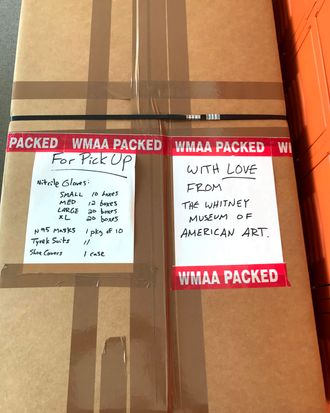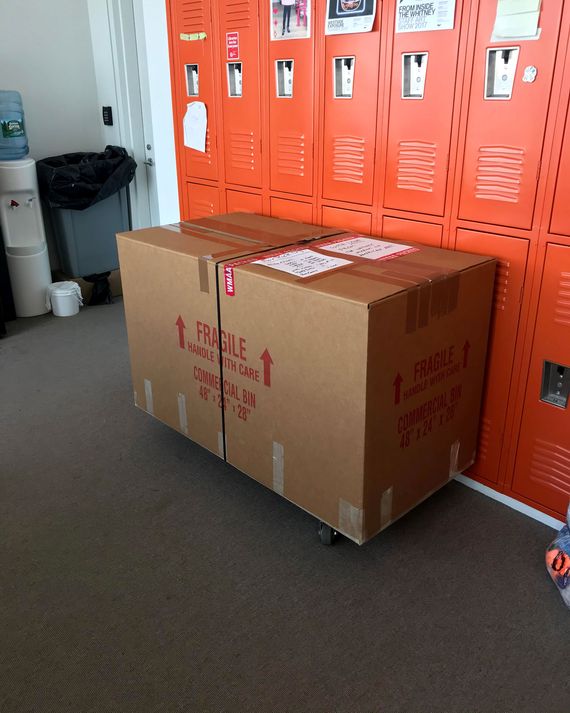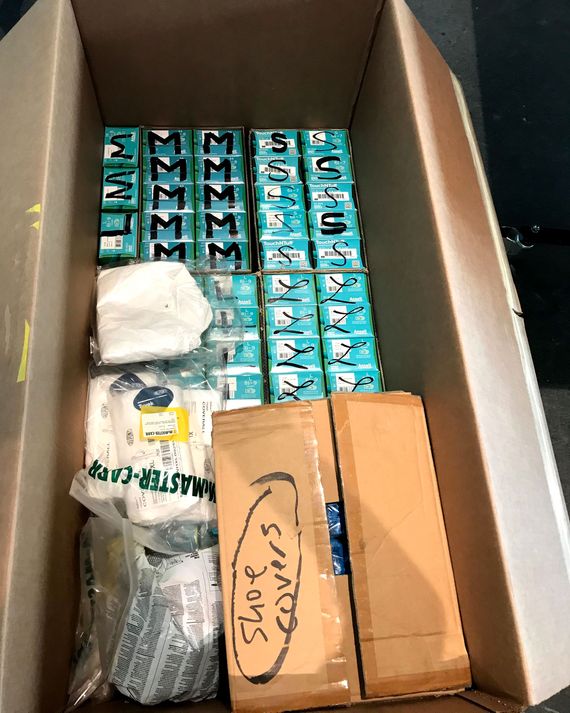
Last Thursday, Shabd Simon-Alexander saw a message on an art-world LISTSERV she subscribes to. An artist named Camille Henrot wrote in saying that she had many of the supplies, like respirator masks and gloves, that doctors and nurses seemed to be running out of. She wanted to donate them, but there didn’t seem to be a way to do that.
Simon-Alexander had been watching stories about dwindling medical supplies and the ad hoc attempts to address them, too. As mask shortages became more dire, medical workers tweeted photos of desperate DIY stopgaps, and fashion designers, among them Christian Siriano and Elizabeth Suzann, offered to step in and sew masks to fill the gap. But cloth masks aren’t a substitute for medical-grade masks — they’re a last-ditch solution. Simon-Alexander realized that there must be tons of artists, set builders, and museum staff who used medical-grade respirator masks to keep from inhaling fumes or dust while working. Getting those supplies to frontline workers was a problem that Simon-Alexander, an artist and clothing designer turned voting-rights activist, was confident she could solve.
Members of the LISTSERV descended into brainstorming mode, with emails flying back and forth by the dozens. “One guy said, ‘Before we get too far, we should figure out whether this is actually something that’s needed and useful,’” Simon-Alexander says. Earlier in the week, she had used a Buy Nothing group on Facebook to give her MetroCard to a woman who worked in a hospital, and now Simon-Alexander got back in touch. The woman posted the question to another LISTSERV, this one populated by medical staff: What do you need, and what would be the parameters for receiving donations?
The feedback started rolling in. Some hospitals were sticking to strict rules about what donated gear they could accept. But others were more desperate. “I am not trying to find hospital-approved gear,” one frontline worker wrote. “We are beyond that. I’m trying to find survival gear that keeps us working and not sick.”
Within a few hours, Simon-Alexander had designed a Google form where donors can list detailed inventories and contact information. Frontline workers can then review that list and contact donors. From there, the donor and recipient figure out how to transfer supplies, either by mail or by arranging a (socially distanced) drop-off. Someone’s husband tossed out a name for the effort: the Mask Crusaders.
The Google form went live the next morning. In the first 24 hours, more than 600 masks, most of them N95s, were transferred to health-care workers in New York. Independent artists and staffers at larger museums started listing N95s, surgical masks, gloves, Tyvek protective suits, and shoe covers by the dozens. Someone who works at the Whitney saw the idea develop on the artists’ LISTSERV and packed up a box of supplies from the museum. The Museum of Arts and Design sent Simon-Alexander an inventory list of its supplies, and she connected them to a recipient at a hospital in the city. As word of the Mask Crusaders spread on social media, Simon-Alexander was contacted by dentists and tattoo artists who were sharing the request with their networks. She’s helped organizers in Chicago, Philadelphia, D.C, and L.A. build the system in their cities, and is looking to expand even further.
The entire operation is fly-by-night, especially on the recipients’ side. The health-care workers who are picking up supplies from the list are doing so independently, to try to plug gaps that their hospitals are struggling to fill. “I can only imagine the hospital would not be okay with this,” one worker on a labor-and-delivery floor in the city told me. “Regulations and liability would come into play.” Still, one of her co-workers had requested supplies from the Mask Crusaders, and was waiting on a drop-off. At her hospital, personal protective equipment has been under lock and key for a week, and workers are scared. “It’s not that we mistrust the hospital,” she told me, “but we know there’s a massive national deficit, and we’re trying to keep pregnant women and ourselves from getting sick.”
“I’m so proud to see people taking care of each other, and it’s very beautiful and hopeful,” Simon-Alexander told me. “I don’t want to downplay that. But at the same time I find it really frustrating that the work of fixing this crisis is left to the people most affected by it.” She points out that the Mask Crusaders’ supplies will run out at some point, too. “We can’t mutual-aid our way out of this entirely. At some point, the government is going to have to step up.”
*This article appears in the March 30, 2020, issue of New York Magazine. Subscribe Now!



